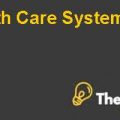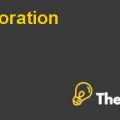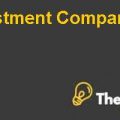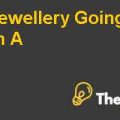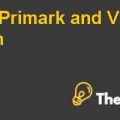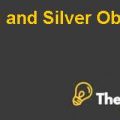
Introduction
Hansson Private Label, Inc. (HPL) is a manufacturer that produces personal care products, including soap, shampoo, mouthwash, shaving cream, and sunscreen. All of these products are sold under the brand names of its retail partners including supermarkets, drug stores, and mass merchants. The company’s sales have grown steadily over the years, and it has generated $681 million of revenues in 2007.
HPL’s largest retail customer has offered the company to increase its share of private label manufacturing significantly. Since HPL has been operating at its full capacity, therefore, in order to accept the proposal, it needs to expand its operations. The company recognizes that if it doesn’t expand the facility it might lose a large portion of its current sales. The problem is that the customer will only commit to a three-year contract, and it expects a go/no-go response from Hansson within the period of 30 days.
The firms manufacturing team has developed a proposal for expansion of the production capacity, which requires an investment of $50 million in expenditure. For HPL, the investment is significant as the company is private. HPL has also not made any significant investment for over a decade now, and therefore, the investment will be risky for the company. It will double the company’s debt and also increase the customer concentration.
Although the management is concerned about the risks, however, it is also motivated by the returns, which include rapid growth and a significant amount of value creation. They feel that the payout generated by the investment will be huge and will last for decades.
Problem Statement
Hansson Private Label, Inc. is a manufacturer of personal care products. It must decide if it wants to invest in a new expansion of its manufacturing capacity. In order to make the decision it needs to perform the financial analysis of the potential project, which requires it to make future cash flow projections and perform net present value calculations.
In order to calculate the net present value, the company’s management will have to compute the net operating profit after tax, identify the amount of cash investment that will be required in working capital, identify the amount of ongoing capital expenditure that will be required, and then they will have to discount all the values to the present. The company’s management also needs to consider its capital planning process systematically, in order to make their decision. The management has to decide if the return on investment will be large enough to justify the risk and effort involved in the investment.
Incremental Cash flows; Using Executive Vice President’s Assumptions
In order to make the decision, the management of the company has performed the financial analysis of the potential project, which requires it to make future cash flow projections and perform net present value calculations. An investment proposal has been generated that includes the capital expenditure required for the project and its working capital needs.
HPL’s Executive Vice President of Manufacturing Robert Gates leads the team that has developed the proposal of the investment. Several assumptions have been made about the cash flows associated with the project. It is assumed that the sales will grow by 10% in the first few years. The growth will then decrease gradually till 2014. From 2015 onwards, the growth rate will remain constant at 2%.
It is also assumed that the working capital days will remain constant throughout the year, and the working capital will be recovered in an amount equal to accounts receivable less accounts payable, at the end of the period. The selling price of the products will increase 2% per annum. The profits will be taxed on the current tax rate of 40%, and the depreciation calculation is based on the straight line method.
Based on these assumptions, incremental cash flows for the project are calculated and presented in Appendix.
Evaluation of the Reasonability of Gates’ Assumptions
Robert Gates has made a few assumptions on the basis of which the investment proposal is made. He has assumed that the growth rate of sales will increase by 2% to be 10% after the expansion is made. It is also assumed that the growth will decline gradually, and remain constant after a certain number of years. The assumption might be too optimistic, as the growth might not increase and even if it does, it may decrease once the three years contract with the retailer ends.
It is also assumed that the growth will remain constant after a certain number of years, which may not be true as the growth may not remain stable. It may either increase, fluctuate, or decrease significantly. Hence, the assumptions about growth are too optimistic.........................
This is just a sample partial case solution. Please place the order on the website to order your own originally done case solution.

